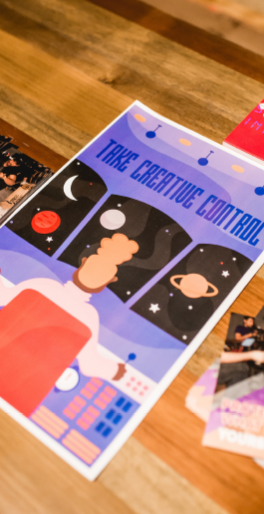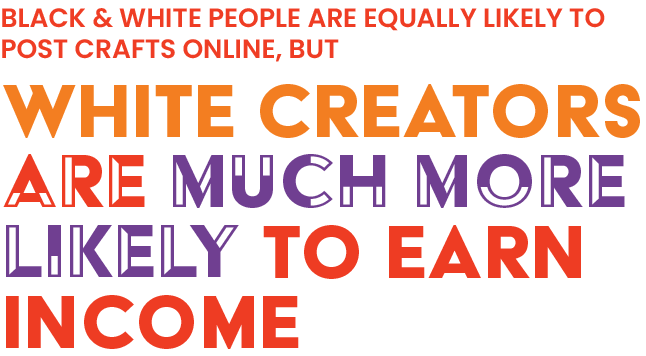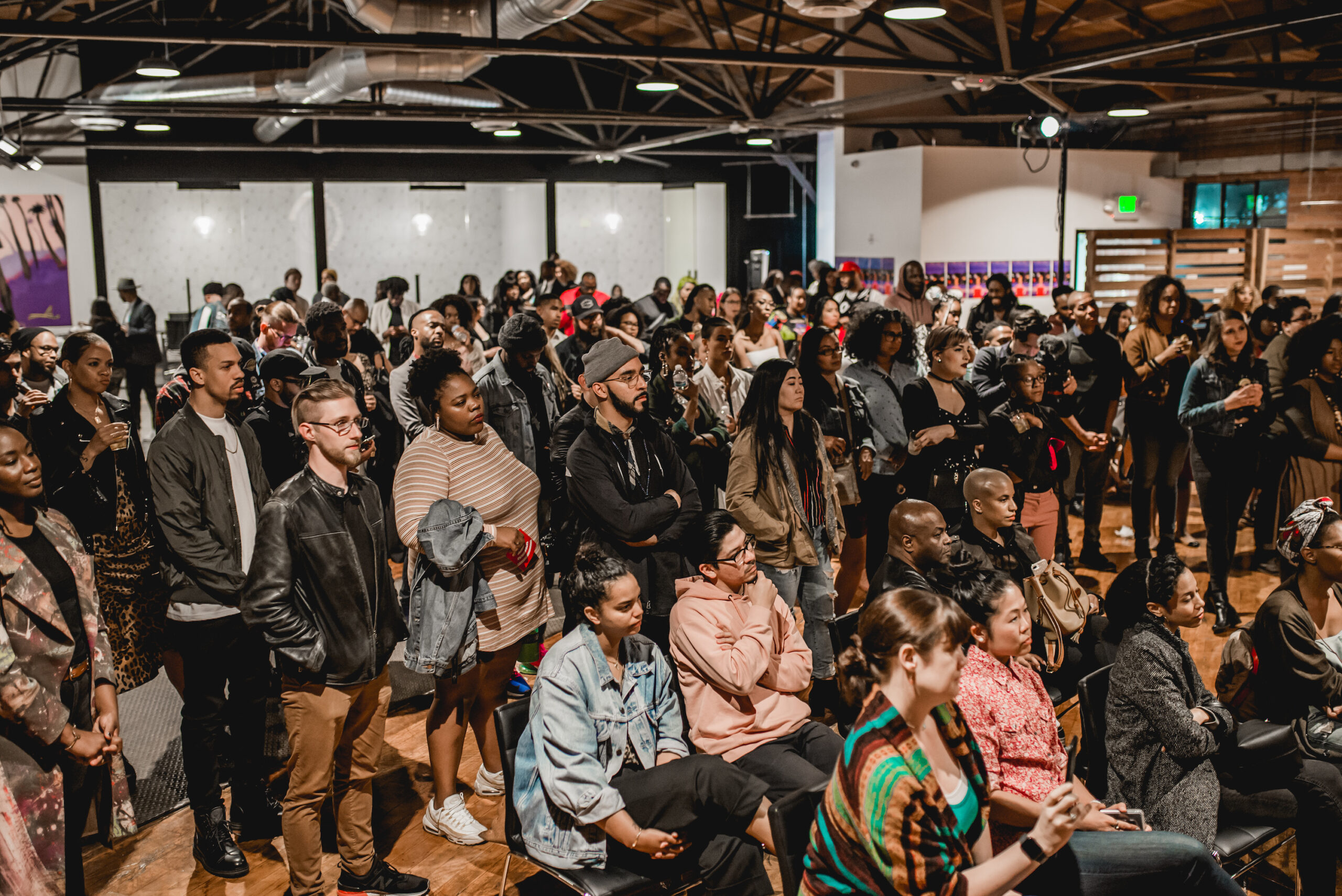The online crafts industry distinguishes itself from other online creator industries in two ways: most creators are women and creators in this industry are more likely to monetize their work than in other sectors. Unfortunately, as with other creator sectors, there are large racial gaps—especially in earnings.
Women make up 60.8% of income-earning craft creators online, but while Black and white people are equally likely to participate in the sector, white people are much more likely to earn income. Asian and Hispanic craft makers are less than half as likely, compared to whites, to participate or earn income online.
More than a third of creators who sell crafts online earn more than $1000—a greater share than in the music, podcast, video, or influencer sectors. However, only 6.4% earn over $20,000.


BY THE NUMBERS
- Of the 3.4 million creators who post their crafts online, 80.3% earn income doing so.
- 60.8% of online craft creators are women.
- White creators are two times more likely to earn income from their crafts online than Hispanic creators and four times more likely than Asian or Black creators.
- Black people and white people are equally likely to post crafts online, but white creators are much more likely to earn income from those crafts.
- 64.1% of income-earning creators earn less than $1000 selling crafts online. 29.6% earn between $1000 and $20,000 while only 6.4% earn more than that.

BACKGROUND
Etsy has revolutionized how craft creators show off and sell their work. While Amazon Homemade and other smaller platforms have entered the sector, Etsy alone had sales of over $10 billion in 2020. The company estimates that creators on the platform earn 11.4% of their income, on average, through their Etsy sales. The business model of Etsy harkens to the age of the craftsmen, when creators earned income solely on their completed works. However, while many may receive a fair price for their work, some have reported that the number of labor hours spent can be double a typical 9-5 job. The intensity in working hours can be overwhelming for what may have started out as a hobby or supplemental income. However, given that the crafts industry is dominated by women who typically are obligated to care for their families, in addition, the amount of time spent on labor may outweigh their profit margins.
Moreover, people of color often face additional hurdles when using platforms such as Etsy to sell crafts. People of color often use crafts as a means of expressing affirmations or ideologies. Crafts made by people of color provide access to product diversity. However, many creators of colored are censored. For example, a Black creator’s Etsy shop was shadowbanned by the website for selling merchandise with phrases like “Worthy of Humanity” and “Decolonize That Ass”. This demonstrates that in addition to facing economic inequality, people of color must also deal with discrimination while participating in online marketplaces.

TAKE ACTION
The online creator economy shows great promise. However, it is far from perfect and, in many ways, continues to suffer from systemic racism, sexism, and classism. As the online creator community grows, it is important that we continue to fight for equal pay, fair working conditions, and inclusive and accepting environments for all creators. There are many benefits to shopping with small-businesses. It is important we all do our part in encouraging and supporting small business owners in their entreprentership. Our toolkits will help creators stay active and up-to-date on the policies moving through Washington, while also providing information on the essential legal procedures that ensure creators are protected and compensated. To download, please visit http://takecreativecontrol.org/Creator-Report-2022


